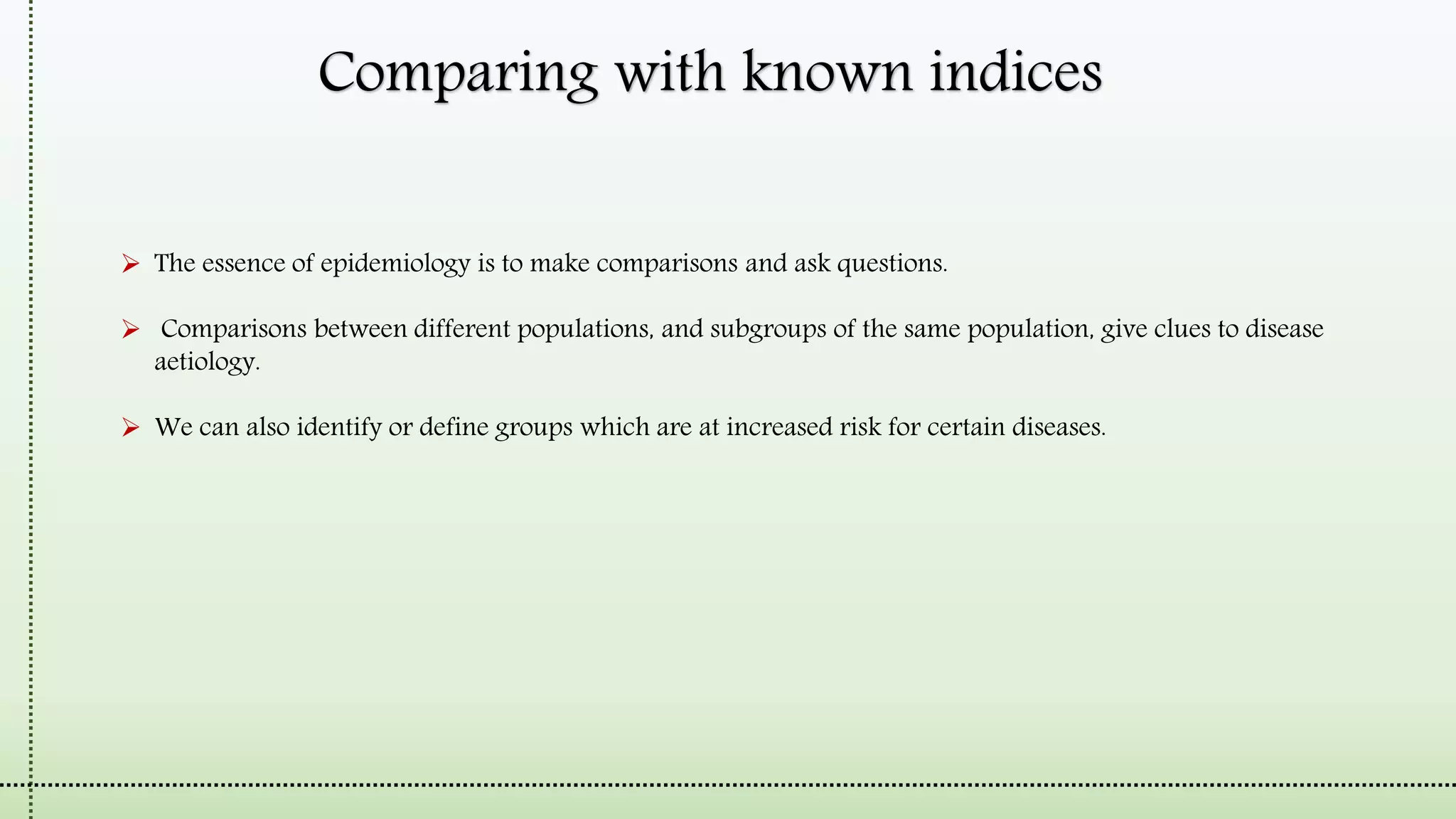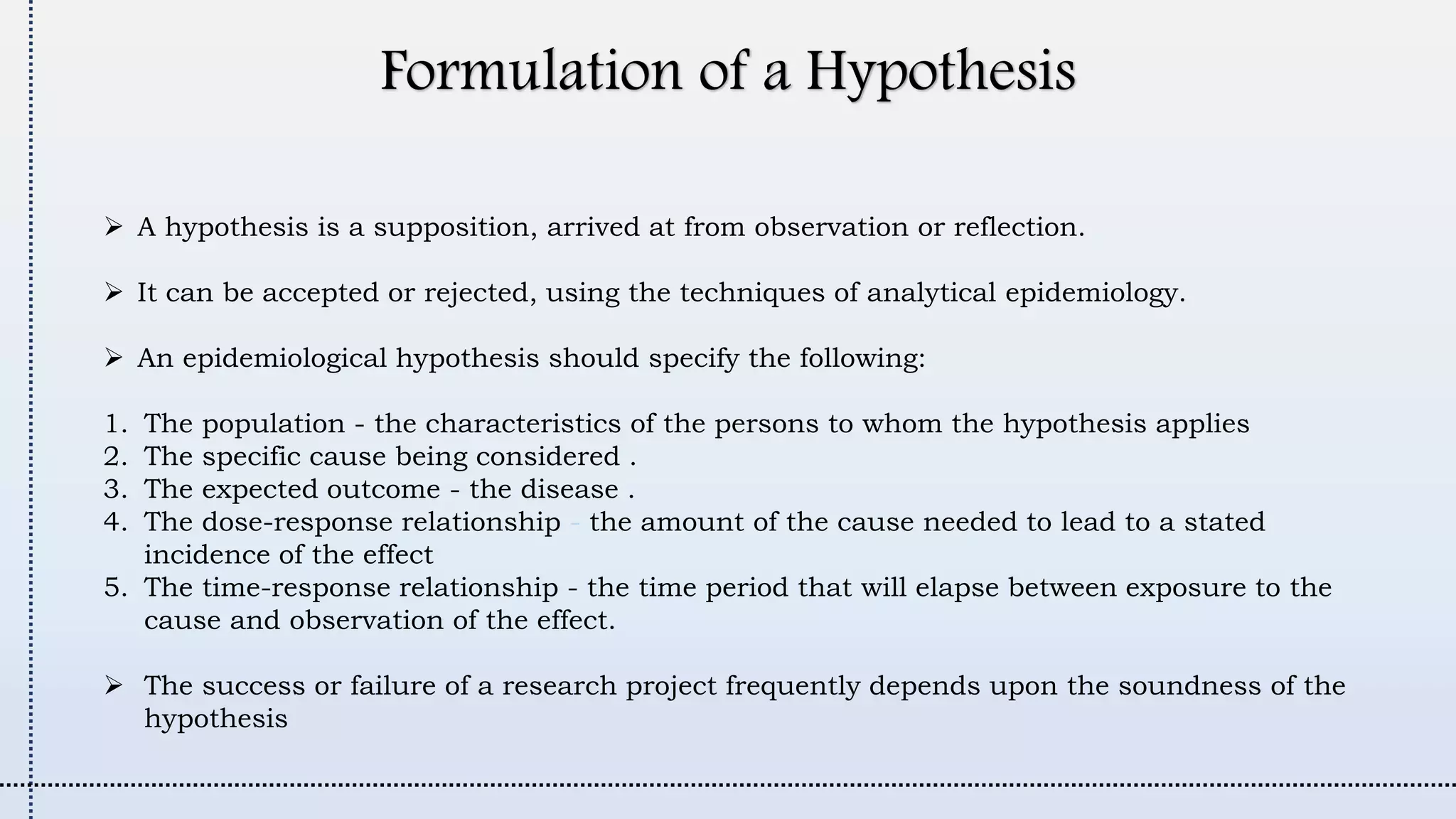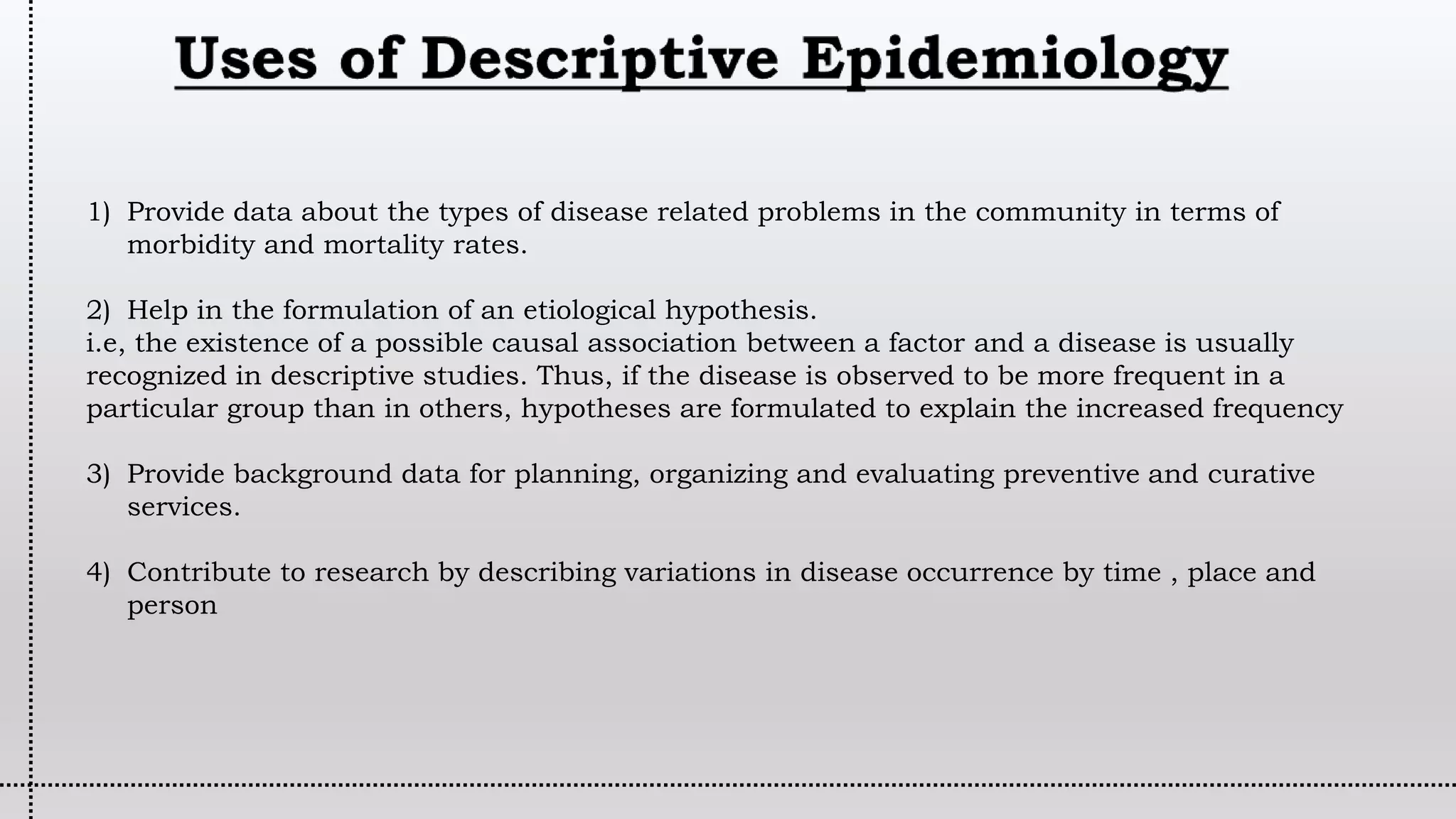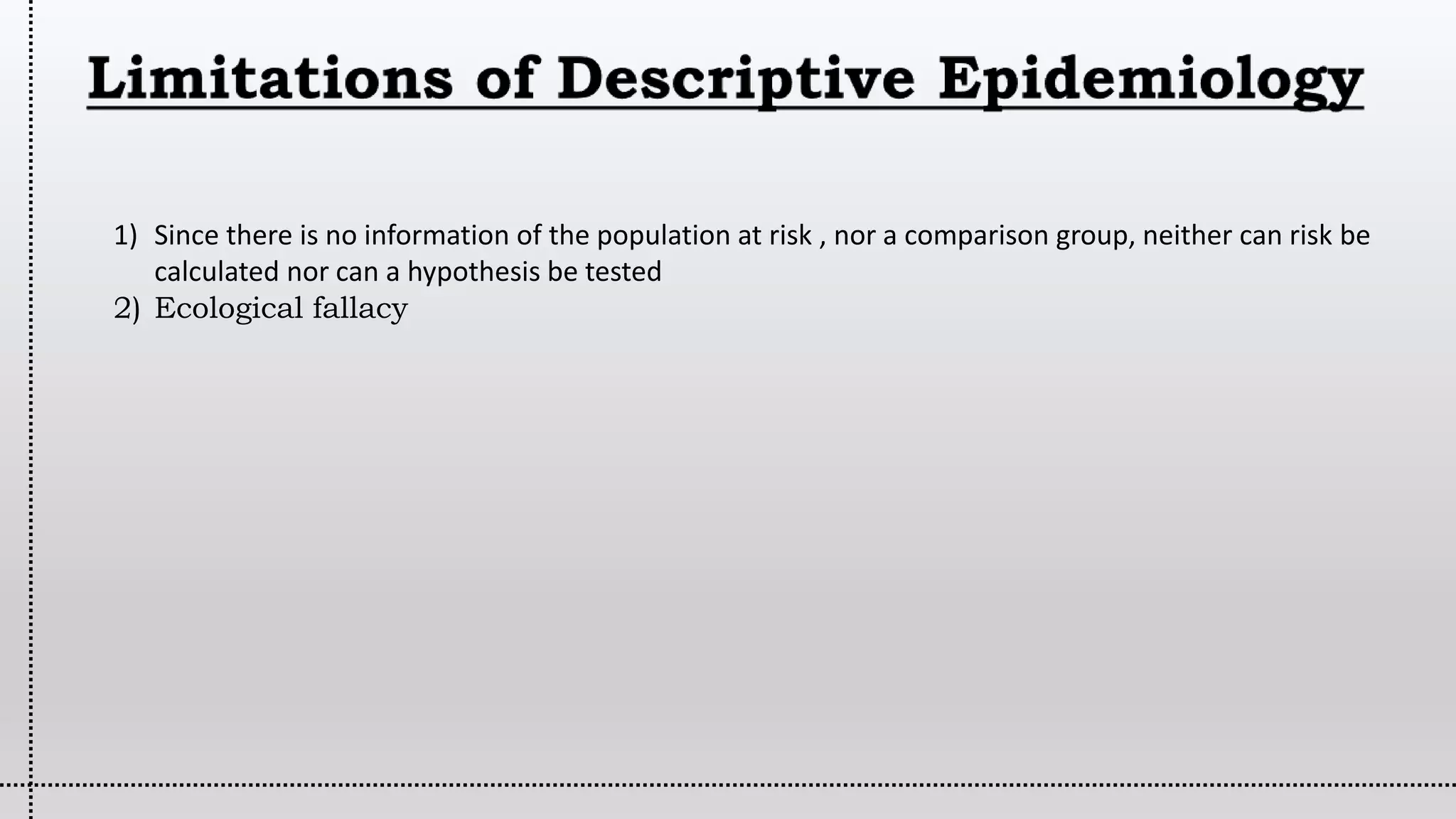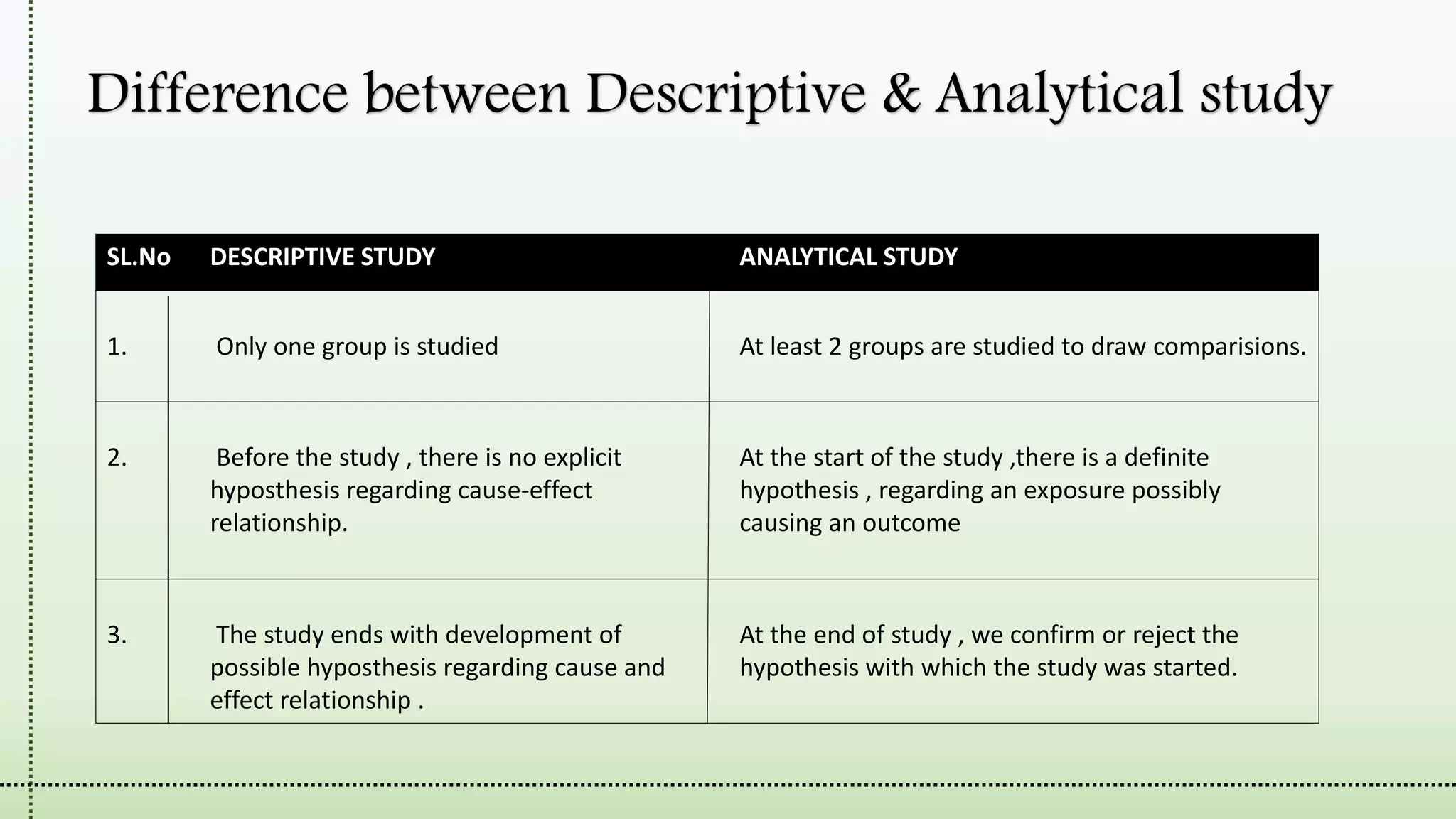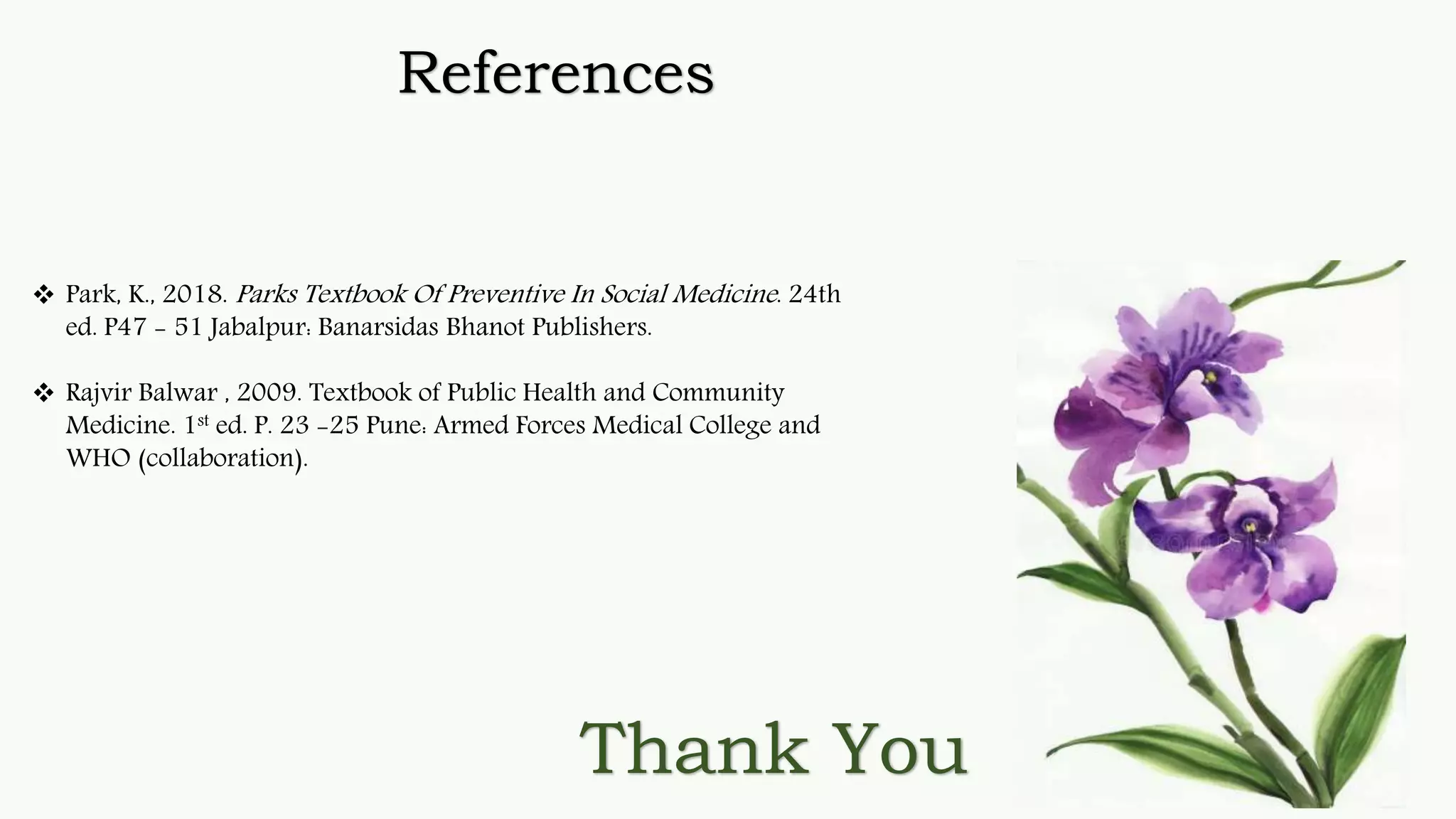1) Descriptive studies aim to provide data about disease related problems in a community in terms of morbidity and mortality rates. They help formulate etiological hypotheses by observing factors associated with increased disease frequency.
2) Descriptive studies describe variations in disease occurrence by time, place, and person. They provide background data for planning health services.
3) Limitations include the lack of a comparison group, which prevents calculating risk or testing hypotheses. Ecological fallacy can also occur.


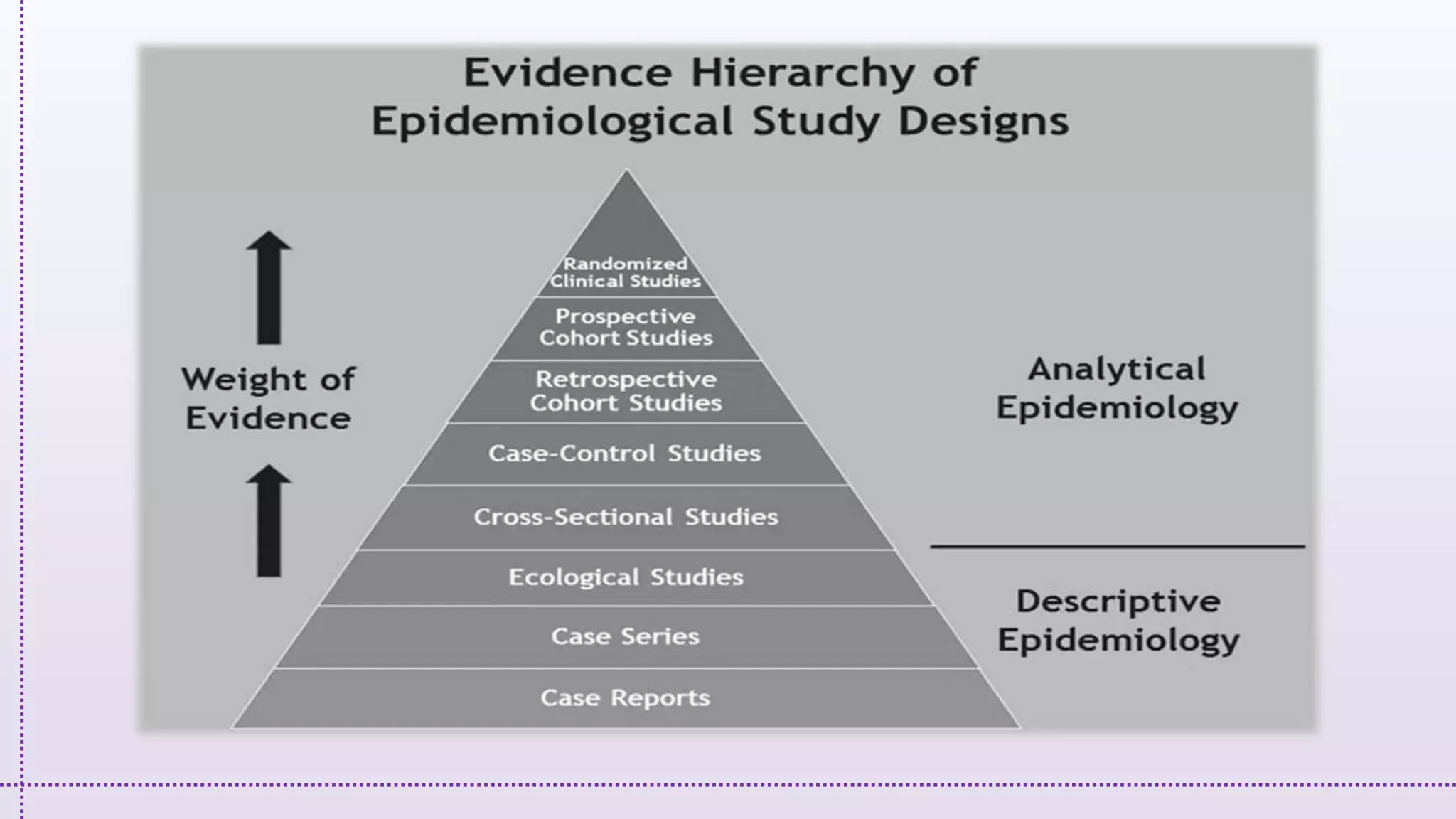
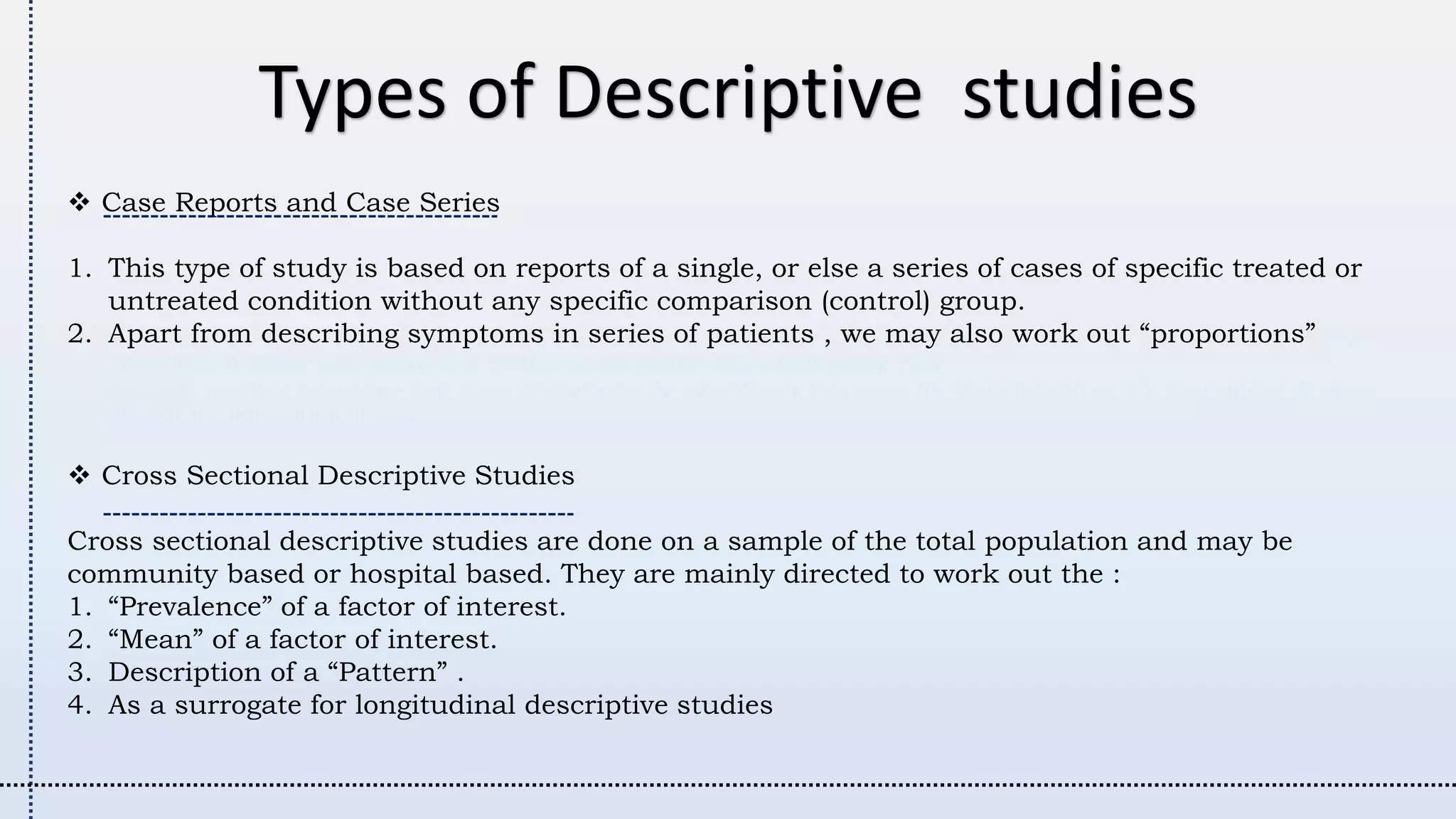


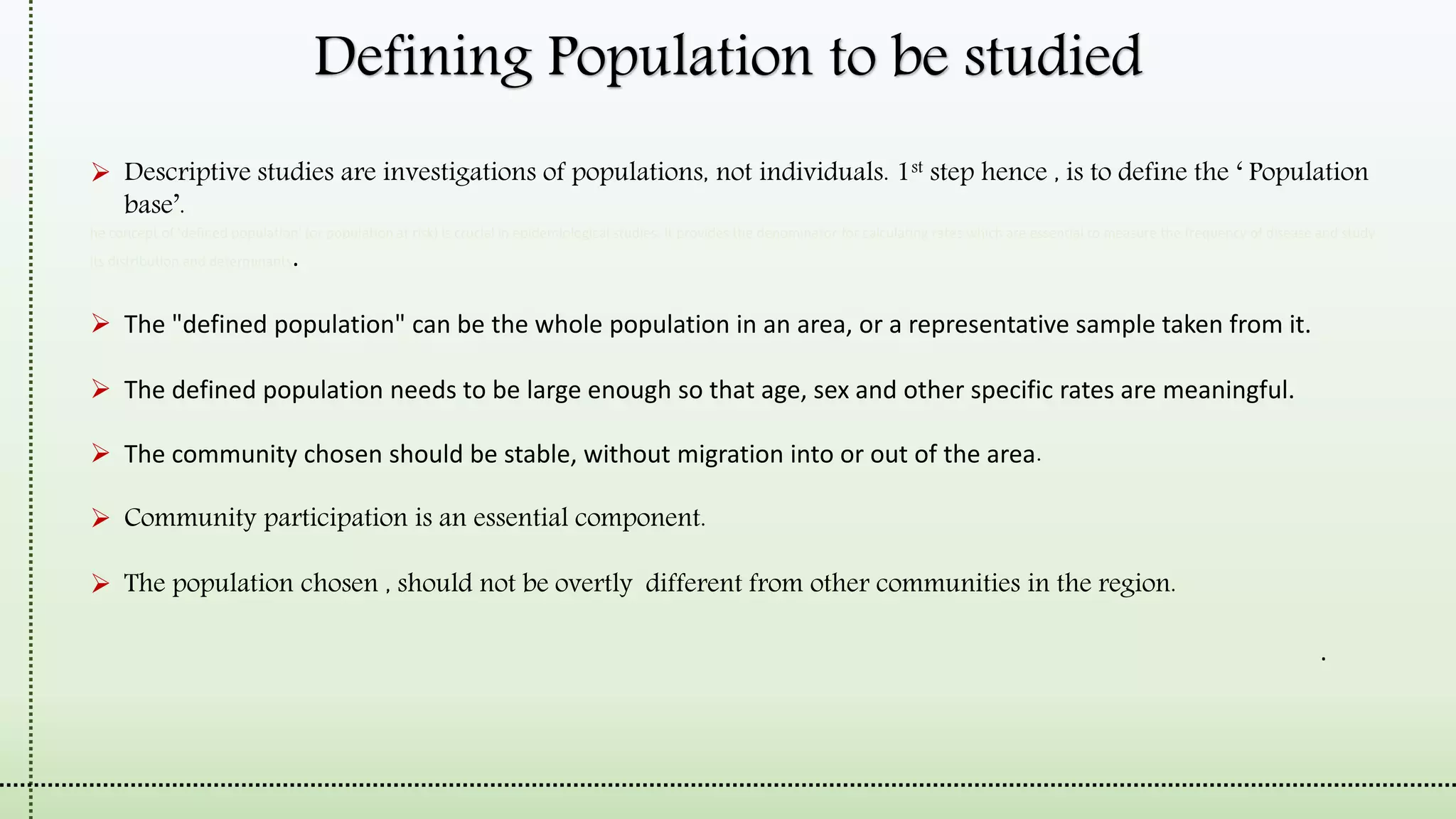
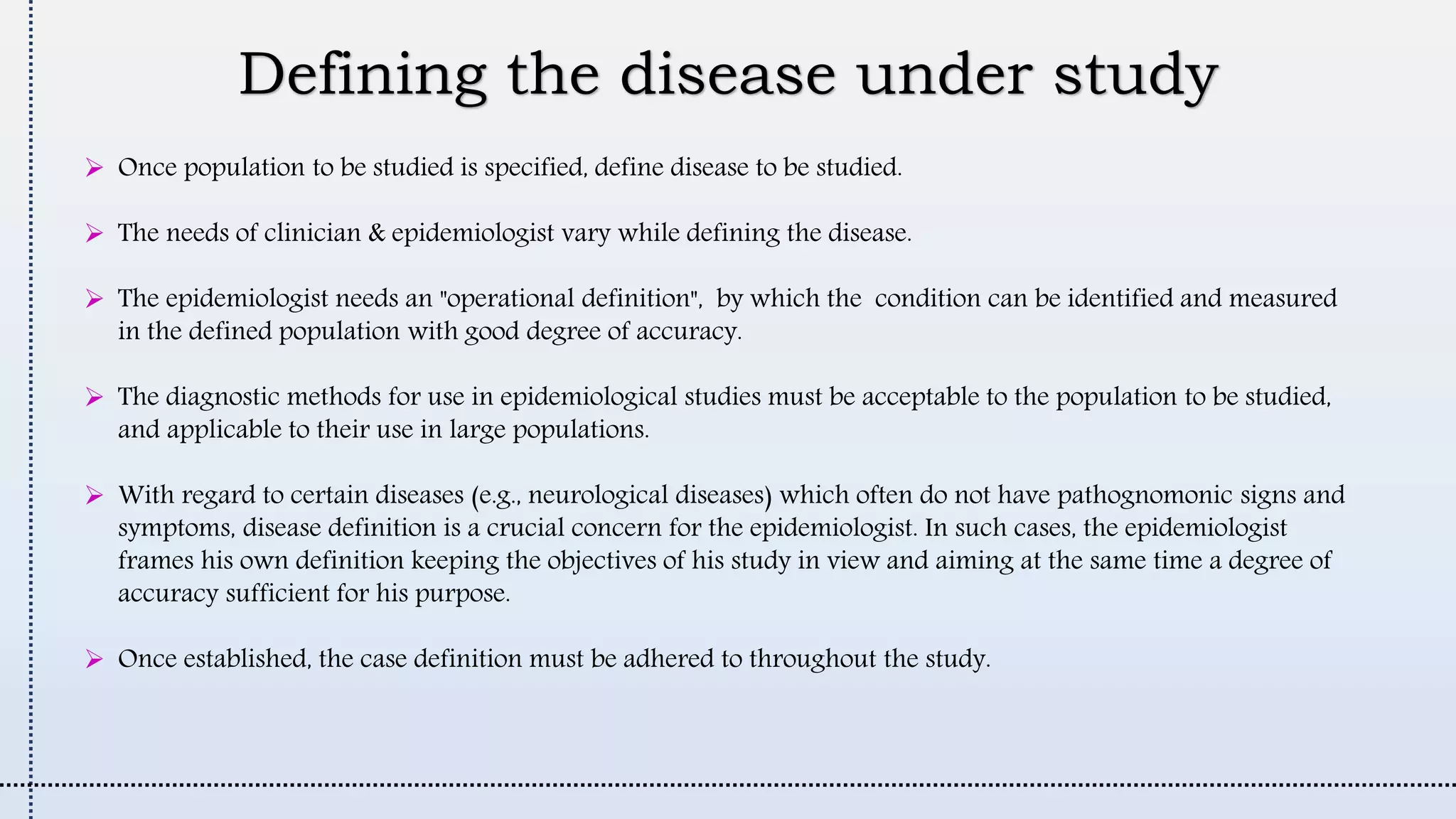
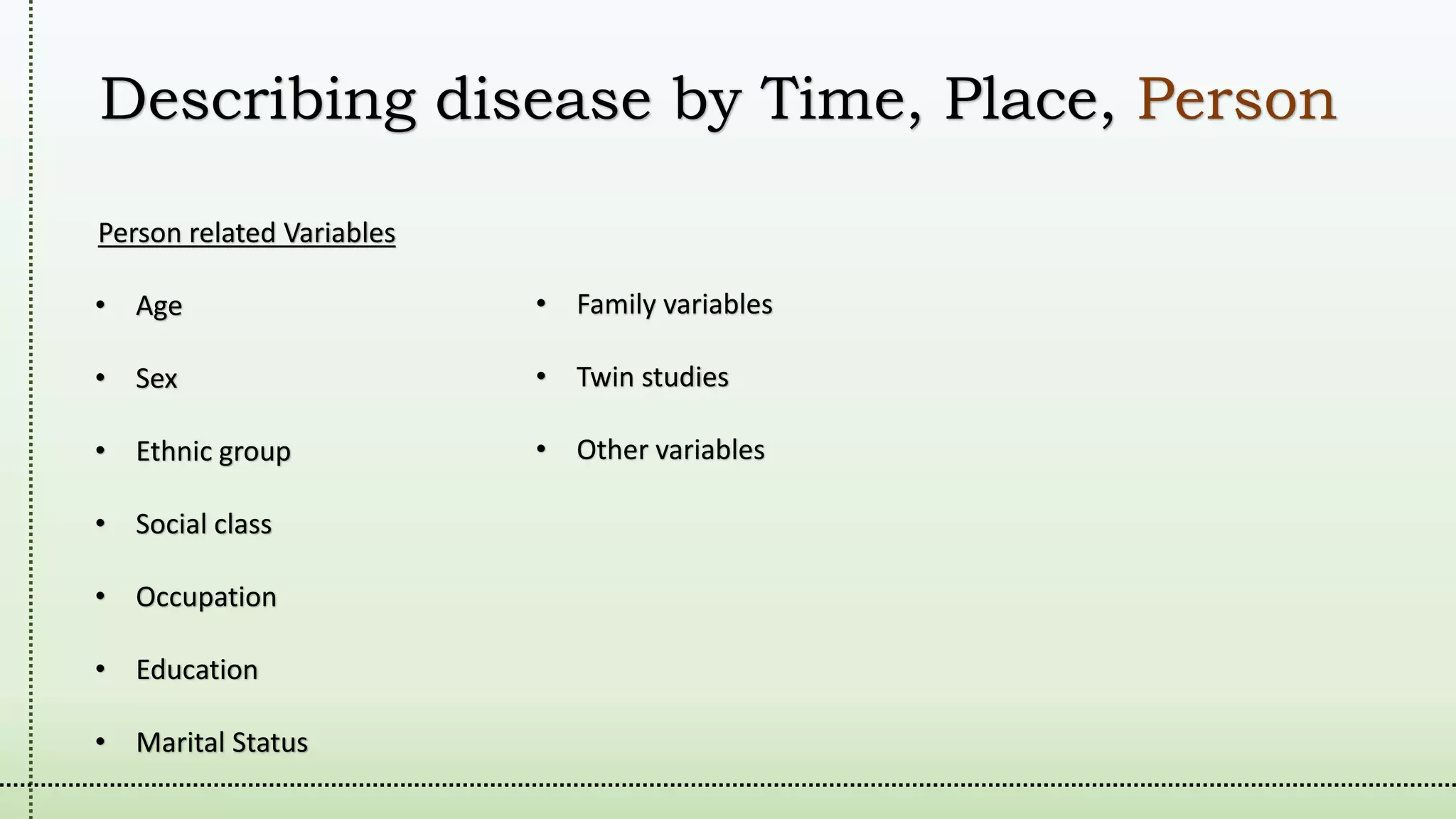
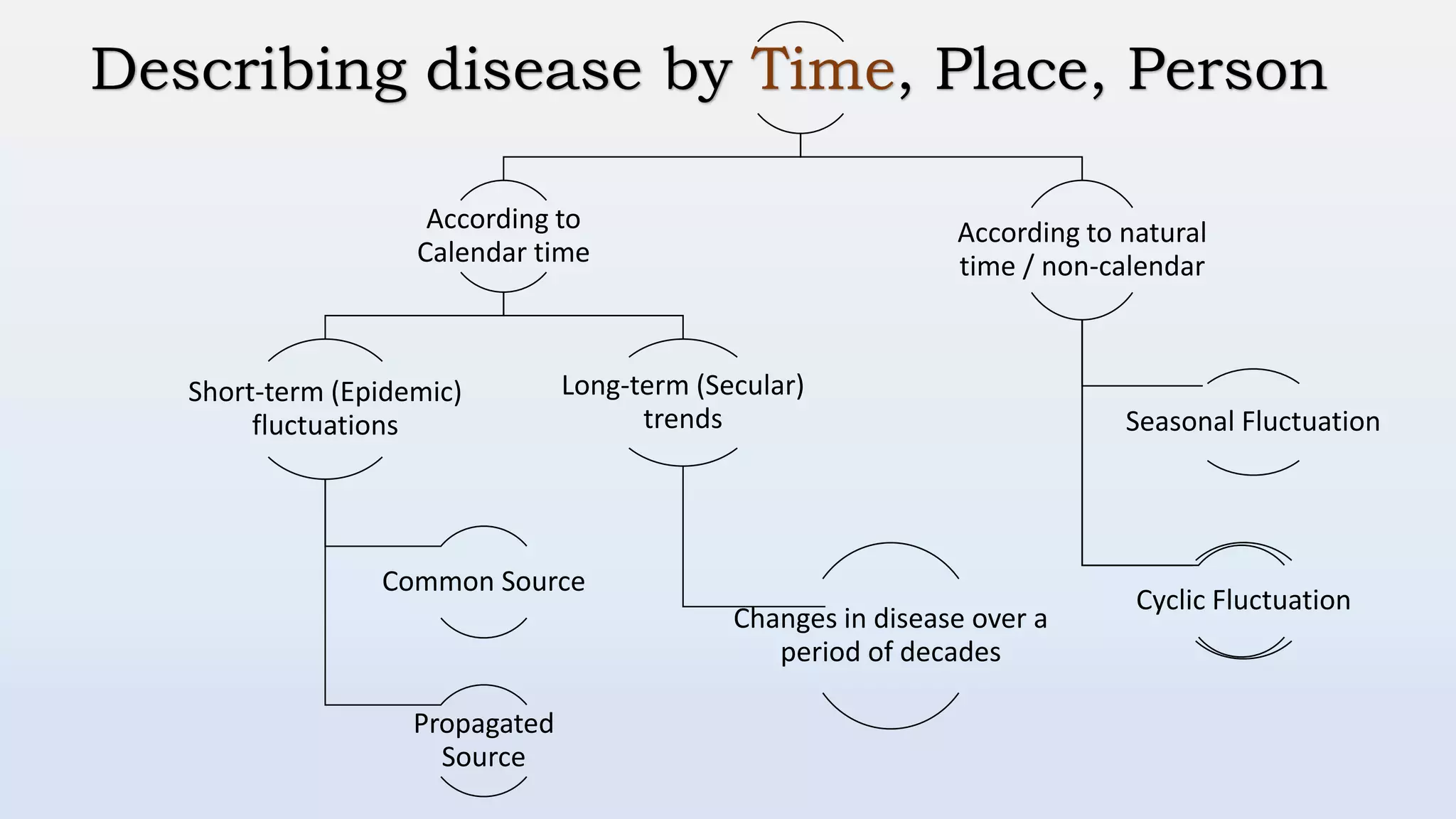

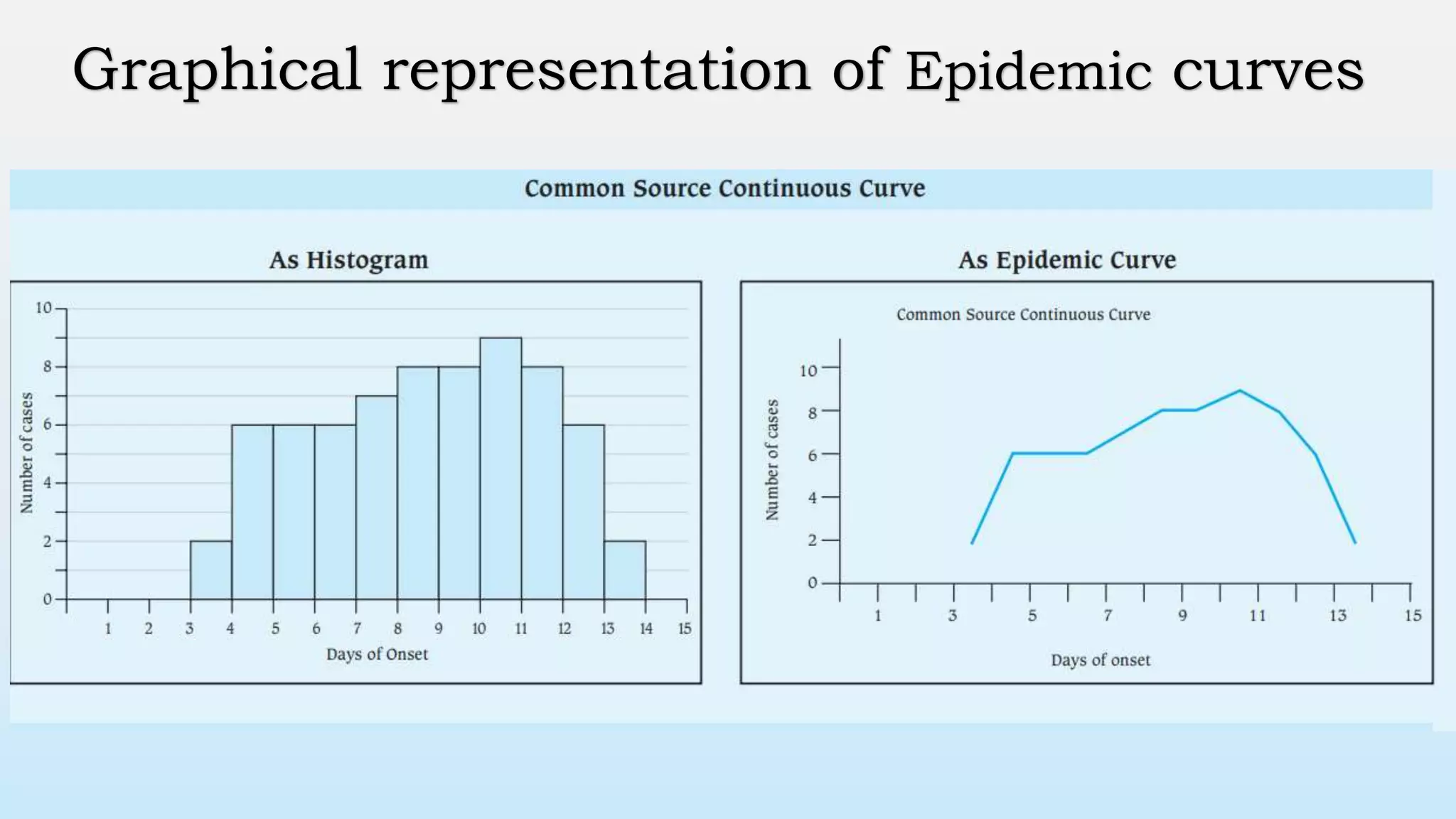

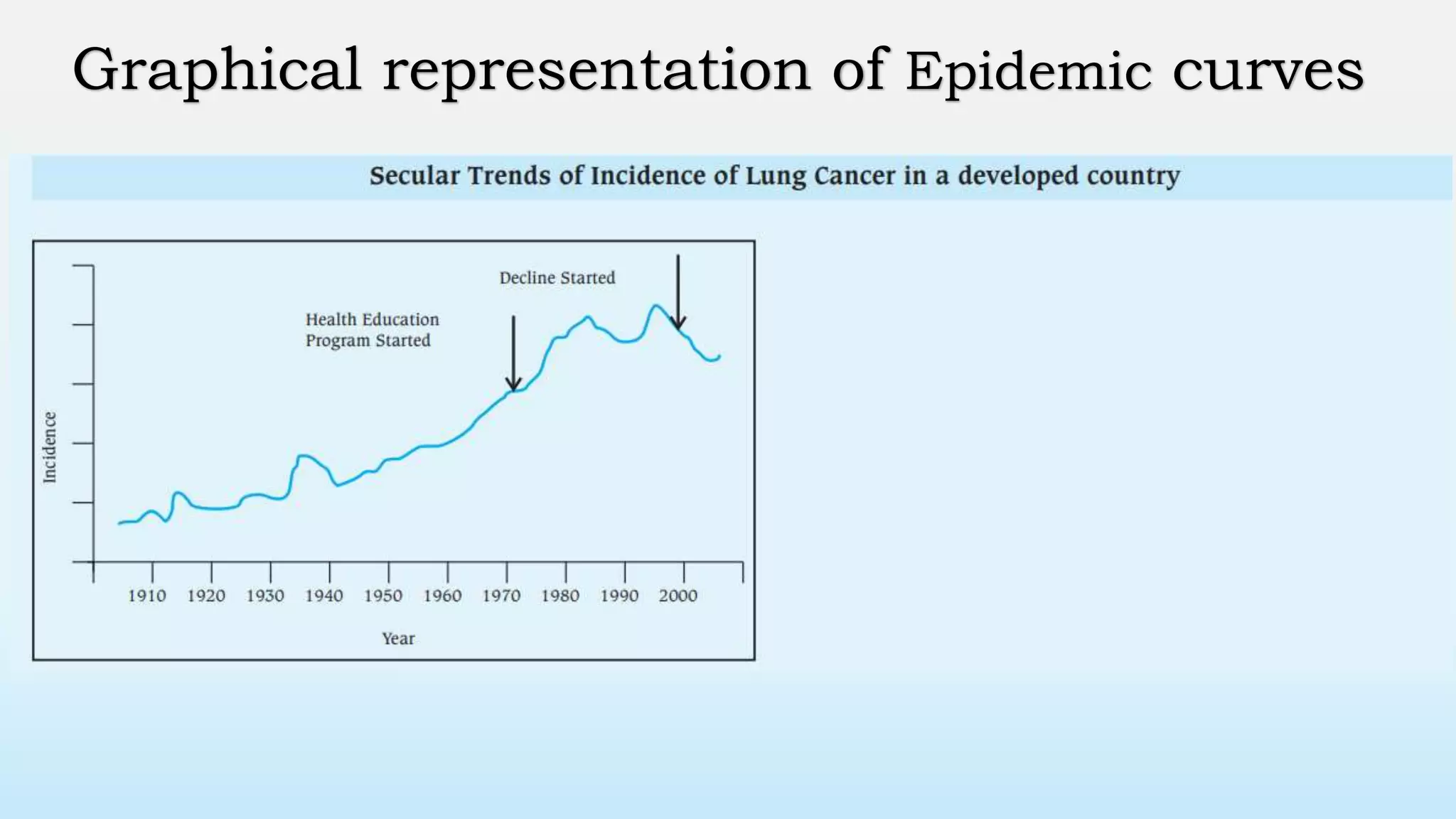
![Describing disease by Time, Place, Person
Many diseases have typical spatial relationships. Geographical pathology is an important
dimension of descriptive epidemiology.
Differences in the distribution of a disease according to place may be made according to Political
boundaries or according to Natural boundaries.
Geographic patterns provide an important source of clues about the causes of the disease. The
range of geographic studies include those concerned with local variations.
a) International- National variations
b) Rural –urban variations
c) Local distributions
When making such international comparisons in respect of a disease, one must initially assess
whether these observed differences are artifactual.
We must make sure that the differences are not artifactual, but real, [ either due to the play of
environmental factors or else genetic factors], a good method of dissecting this out are “Migrant
Studies”.](https://image.slidesharecdn.com/descriptivestudies-210430072025/75/Descriptive-studies-hima-ppt-15-2048.jpg)
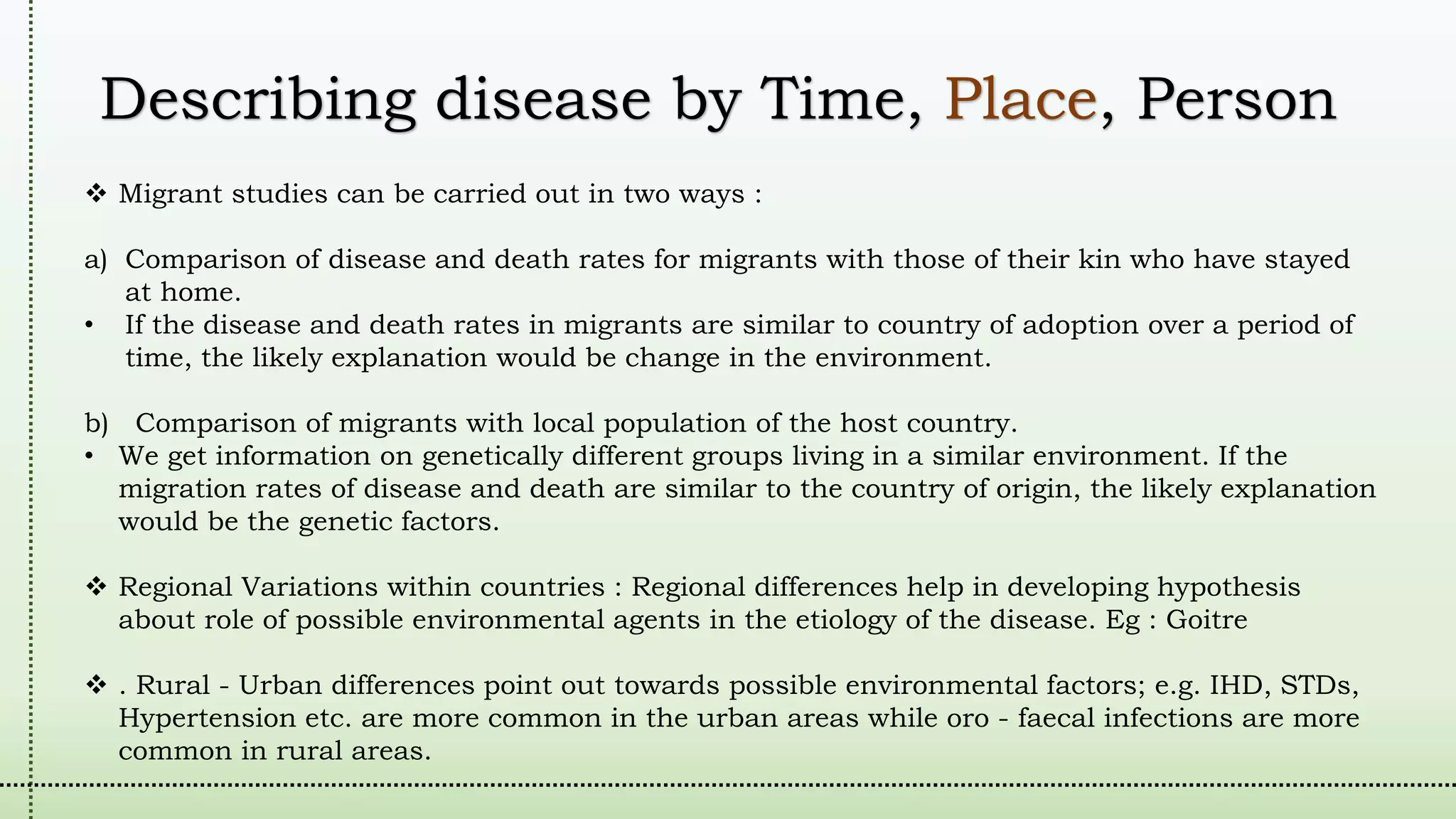
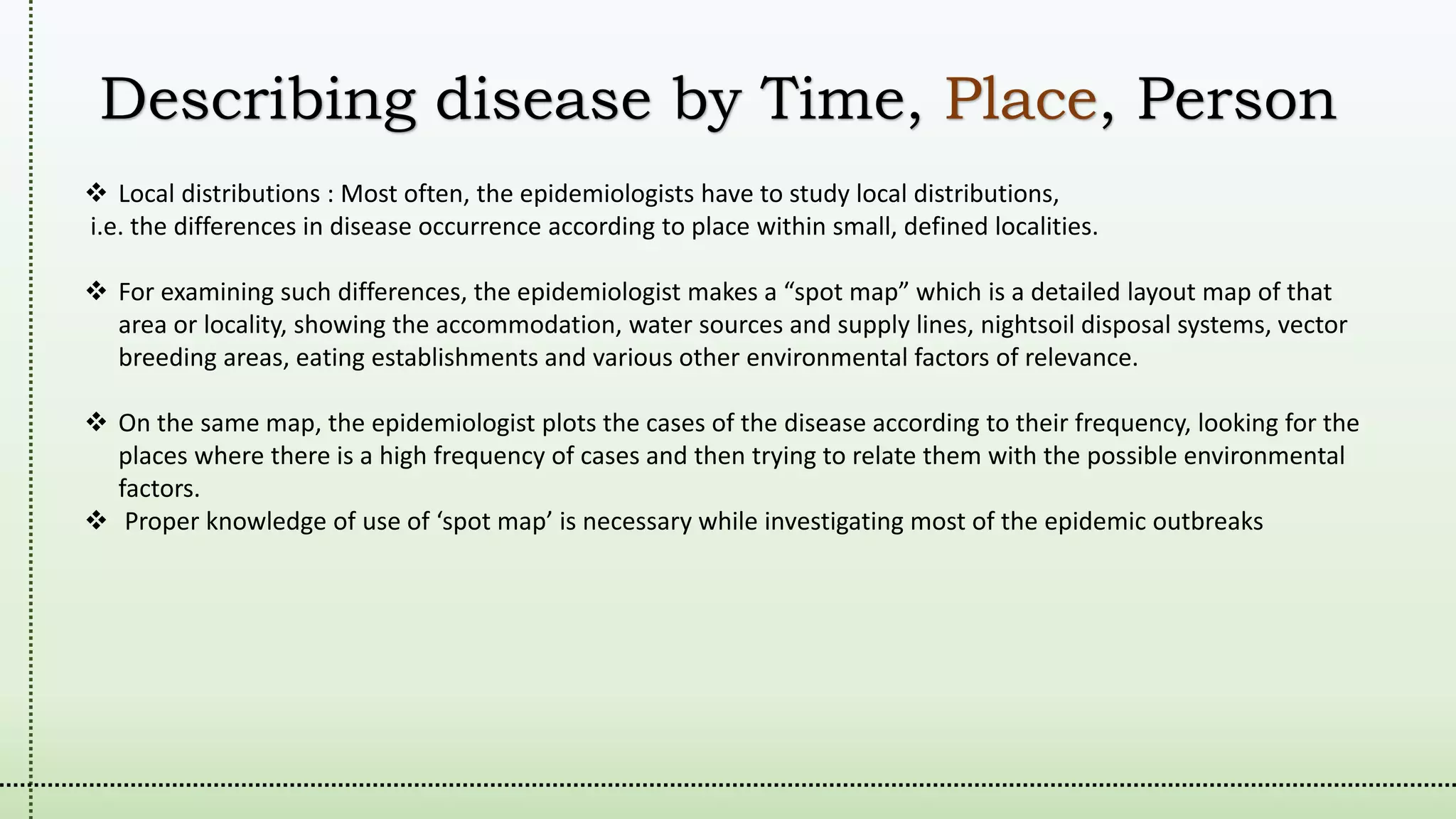
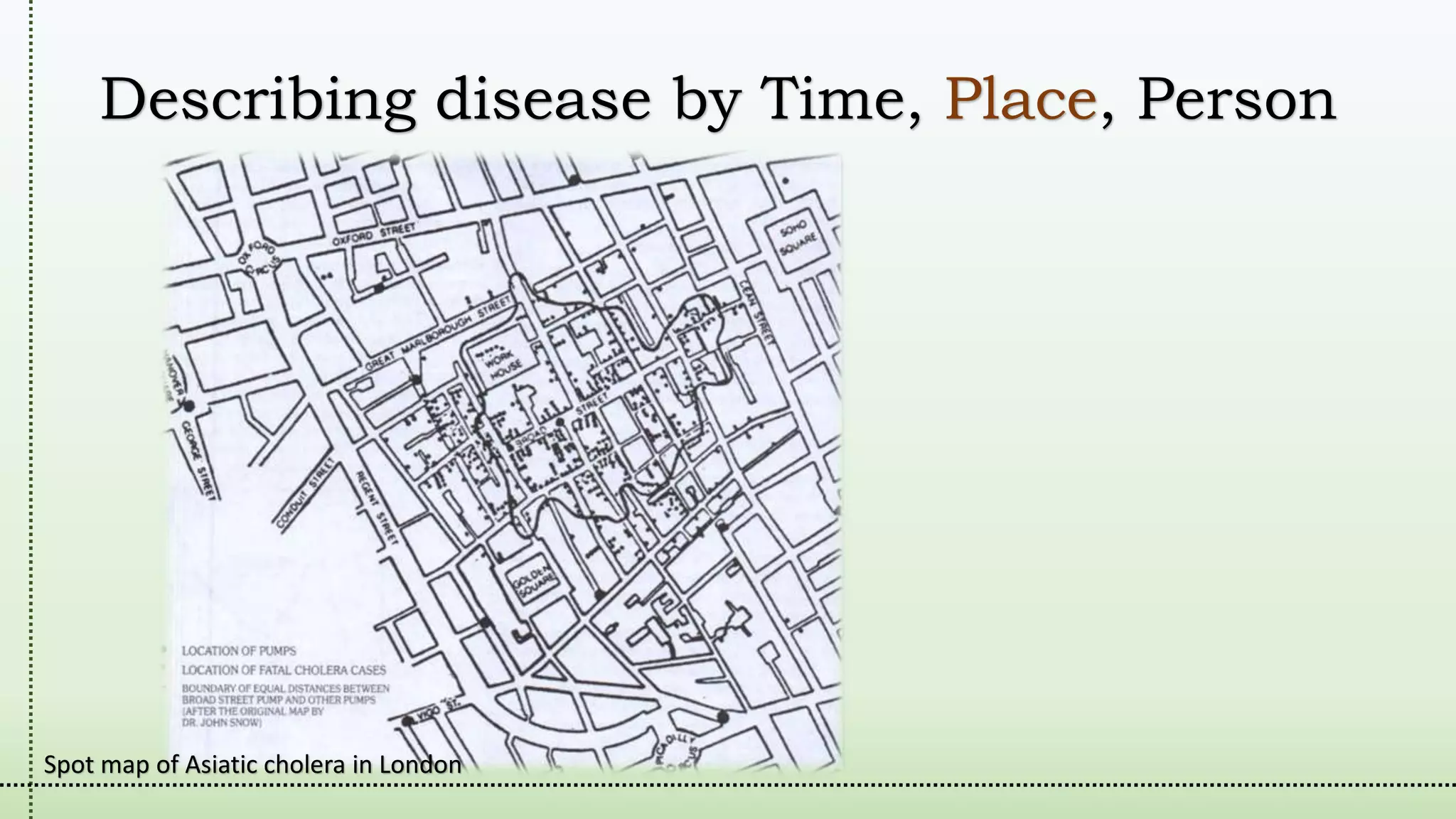
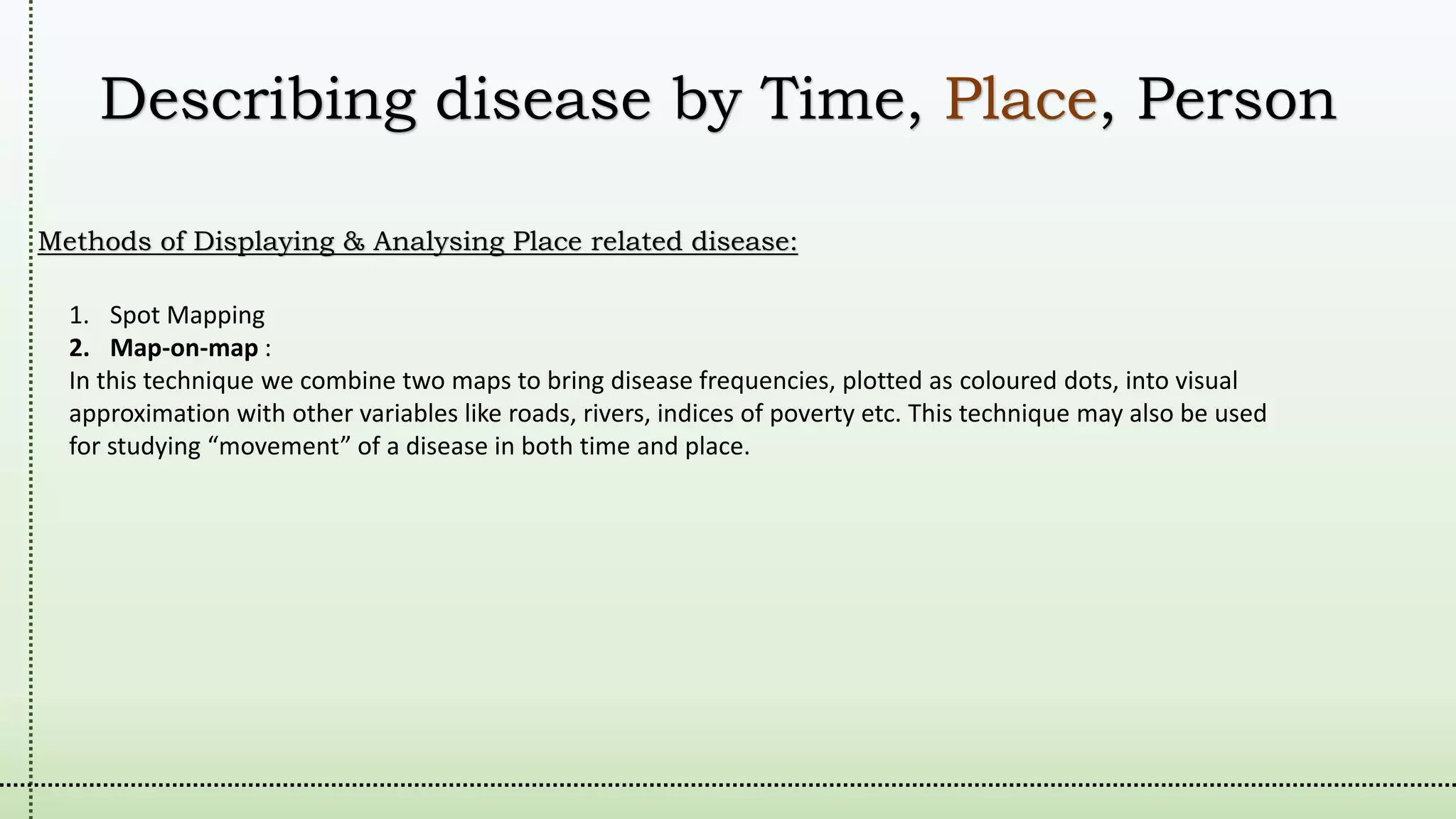
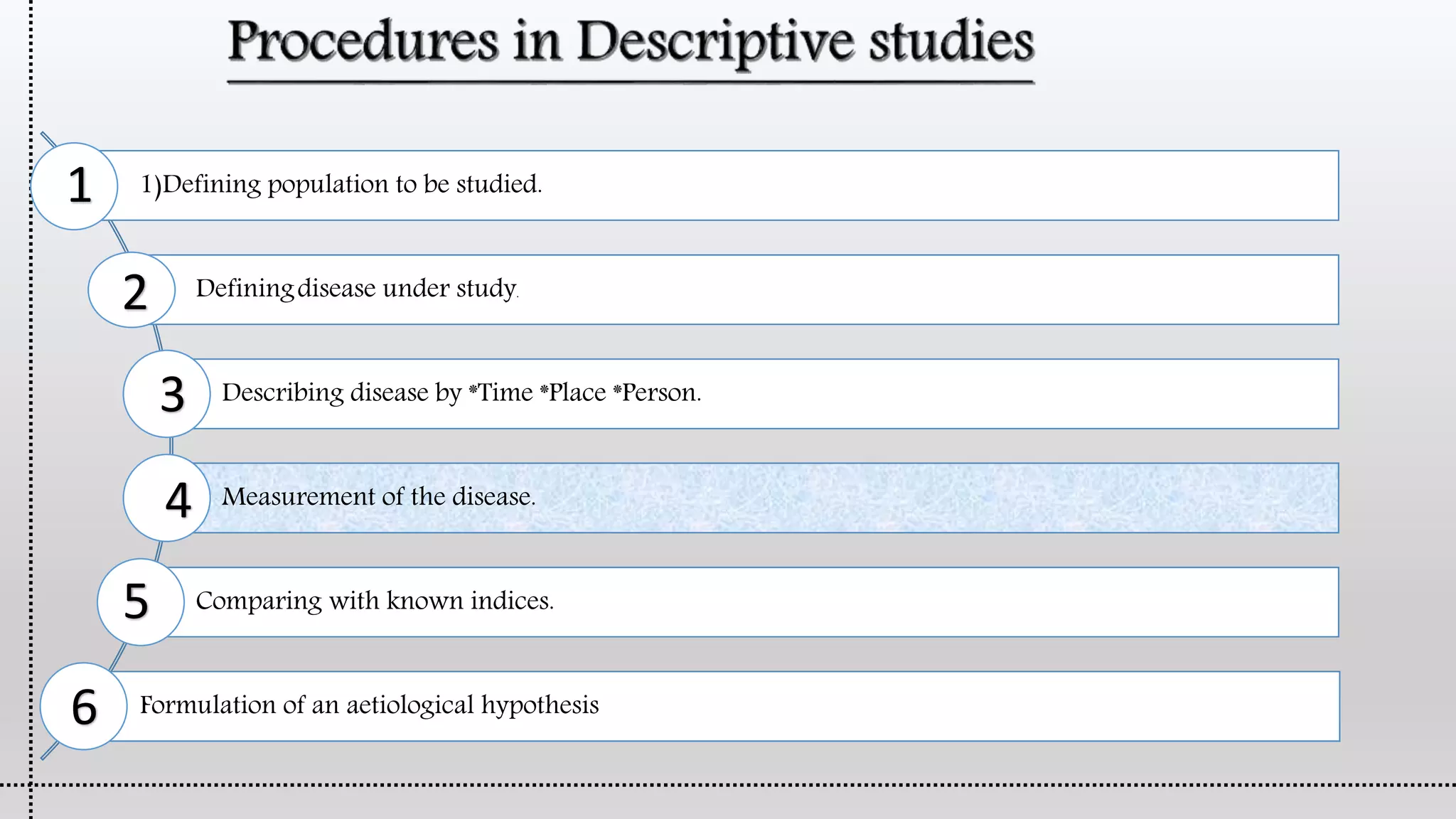

![Measurement of the disease
CROSS-SECTIONAL STUDY : [a.k.a Prevalance study]
Simplest form of observational study.
Single examination of a cross-section of the population at 1 point in time: results of which are
projected on whole population.
More useful for chronic , than short lived study.
A cross-sectional study provides information about disease prevalence, but not enough
information about the natural history of disease or about the rate of occurrence of new cases
(incidence).
LONGITUDINAL STUDY :[a.k.a Incidence study ]](https://image.slidesharecdn.com/descriptivestudies-210430072025/75/Descriptive-studies-hima-ppt-22-2048.jpg)
